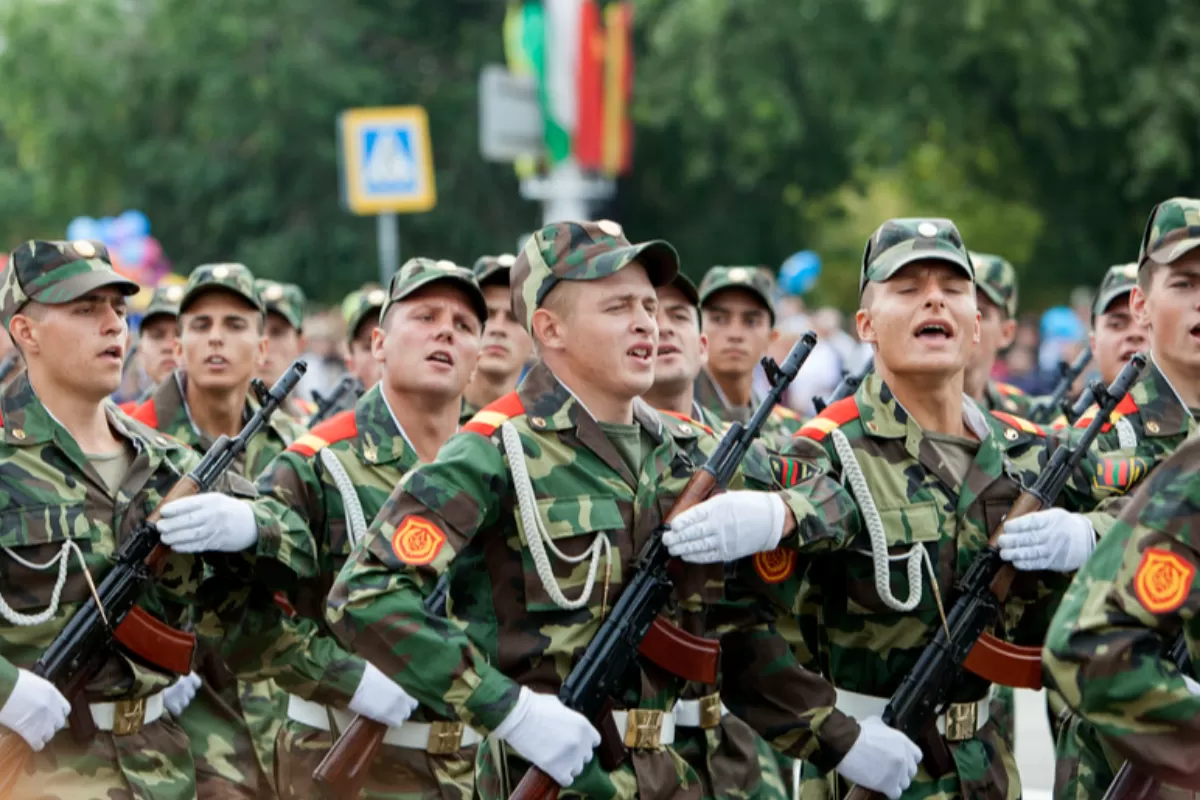
The crisis in Ukraine has generated a great deal of concern in the Republic of Moldova as well, considering that a possible conflict might also spread to its territory, in Transnistria.
At formal level, Chișinău is right now trying to get information from its Western partners about how international powers would react if an actual war does break out. The Moldovan diplomacy is in permanent contact with Bucharest authorities and NATO, manifesting an increased interest in the developments.
“We are keeping an eye on the situation and, of course, we are very concerned. Our institutions remain vigilant. We have a number of scenarios we are considering and for which we have prepared for, but, just as everyone else, we want international forces to come up with a peaceful solution at regional level, so that we don’t have to put into action all the measures we have prepared”, president Maia Sandu recently told Pro TV Romania.
In turn, Foreign Minister Nicu Popescu is in permanent contact with NATO, but also with Russia, in an attempt to decode the whole situation at diplomatic level and to keep a close eye on the situation. After talking on January 10 to the NATO deputy Secretary General, Mircea Geoană, Nicu Popescu on January 12 met with Russia’s ambassador to Moldova, Oleg Vashnetsov. The two officials discussed the “security developments in the region”. Although he doesn’t have close ties with Tiraspol, Popescu invited the head of the OSCE mission to the Republic of Moldova, Claus Neukirch, to discuss the situation in Transnistria.
Worth mentioning is that the Republic of Moldova has upheld its set of priorities, again calling on Moscow to withdraw its troops from its territory. On January 19, during his visit to Moscow, Secretary of State with the Moldovan Foreign Ministry, Ruslan Bolbocean, insisted on destroying the munitions cache stockpiled in the military depot.
Alternately, on the same day, the Foreign Ministry set out the priorities of its relations with NATO in the 2022-2023 period. “Constitutional neutrality is not tantamount to the isolation of the country. We are fully determined to develop cooperation with our partners with a view to combating new common threats to our security, such as terrorism, cyber threats, and to contribute to the promotion of stability and security of the region and Europe as a whole”, Nicu Popescu wrote on his Facebook page.
Moreover, Nicu Popescu is expected to pay an official visit to Brussels on January 24-25, where he will meet with two high-ranking EU officials, as well as with NATO deputy Secretary General, Mircea Geoană.
A platform Russia might use to attack Ukraine
Ukrainian pundits argue Russia can at any time attack Ukraine, although they are unsure about the true political costs such a maneuver would bring about both domestically, as well as in terms of the West’s response.
Ukrainian military analyst and the director of the New Geopolitics Research Network, Mykhailo Samus, told Radio Chișinău that the Russian intelligence could use Transnistria in order to launch new challenges against Ukraine, thus assisting a possible Russian offensive from the Black Sea and annexed Crimea.
“I am confident there are numerous secret services operating out of Transnistria, secret agents and Russian special forces, and all of these will be used against Ukrainian territories, in particular large cities, in order to create chaos, to destroy basic infrastructure and to stir a panic in Odessa and neighboring regions”, the expert said.
On the other hand, the director of the “IDIS” Viitorul think tank in Chișinău, Igor Munteanu, believes that, by means of its warmongering, Moscow seeks to establish “USSR 2.0”. “Russia not only wants to take control over the entire ex-Soviet space, but to restore the Warsaw Pact. Russia has great and important claims in Romania, Bulgaria, Poland and other EU and NATO member states. Russia is not interested in Finlandization, but to turn its neighbors into satellites at gunpoint. The crisis calls for a response strategy”, the analyst commented.
Political expert Anatol Țăranu also believes the Republic of Moldova could become the stage of a military conflict between Russia and Ukraine by means of the separatist region of Transnistria. “If Russia launches a large-scale military operation in Ukraine, it’s very likely the Republic of Moldova might not be able to keep away from the conflict and that it should be affected directly”, Anatol Țăranu told TVR Moldova.
It is not entirely clear for the time being if Russia wants to follow up on its threats against Ukraine, but the West has hinted that Moscow’s demands are unacceptable, and that not only will it provide a significant assistance to Ukraine, but it will also respond with equal measure, which might seriously affect the economy of the Russian Federation. In this context, the Republic of Moldova is trying to keep itself informed about the situation in order to put the few resources it has to good use, should an actual war break out between Moscow and Kiev.
Transnistria, the main security risk for Moldova
Russia still has troops stationed in Transnistria, which is why Moscow may very well have plans for this region. Many have speculated that Transnistria might be the end goal of a Russian attack on the Ukrainian Black Sea coast, the so-called Novorossiya, which Vladimir Putin mentioned during the first invasion of Ukraine. More recently, there was even talk about possible challenges in Transnistria that would provide Russia with the pretext it needs to launch an all-out attack on Ukraine.
Transnistria is not just a platform Russia could be using against Ukraine. After all, the Republic of Moldova, just as Ukraine, is committed to establishing closer ties with the West, which means it is trying to free itself from Moscow’s orbit. In 2013, after huge pressure from the Kremlin, Viktor Yanukovych made a last-minute decision not to sign the EU Association Agreement, which set in motion the string of events that culminated with the annexation of Crimea and the war in Donbas. The same year, the Republic of Moldova signed its own EU Association Agreement. The regime controlled by oligarch Vladimir Plahotniuc and the short-lived Socialist administration that came afterwards took steps to drive Moldova away from the EU. However, in 2020 and 2021, pro-European reformist parties obtained landslide victories in the elections and promised to renew Moldova’s European integration efforts. It is obvious this position cannot possible suit Russia’s plans, evidence of which can be found in the campaign of fake news and disinformation carried out by Moscow or by pro-Russian politicians in the Republic of Moldova, promoting narratives about the West’s alleged efforts to undermine and subdue Moldova, or about Moldova’s purported attempts at destabilize Transnistria and turn the country into a NATO bridgehead in its war against Russia.
Moscow has approximately 2,000 military deployed in Transnistria, divided in two types of forces: the “peacekeepers”, which are part of the a buffer force charged with keeping the peace (which has been surrounded by a great deal of controversy), and troops that are part of the Operational Group of Russian Forces in Transnistria (OGRF), whose official assignment is to guard the ammunition depot in Cobasna village, which in the early 1990s was still storing some 20,000 tons of Soviet-era ammunition. The depot is located a few kilometers away from the Ukrainian border and is considered a high security risk for the region.
While Russian “peacekeepers” are officially mandated to stay in the Republic of Moldova, the OGRF has no legal reason justifying its presence in the separatist region. Moreover, the “peacekeepers” and OGRF are de facto one and the same force, periodically switching roles, meaning the “peacekeepers” become OGRF and the other way round.
The OGRF reports directly to the Western military district of the Russian Army, and is the direct successor of the 14th Soviet Guards Army. Its mission is to hold position as an outpost until reinforcements arrive in the area.
The potential of this force might seem insignificant to NATO, but it could cause serious damage in the case of a lightning attack in Moldova, all the more so as adding to the Russian military is a force experts believe to be 15,000 strong which Tiraspol can easily mobilize. The Republic of Moldova’s army, which is expected to rise to the challenge, only relies on 6,000 troops, including technical staff. It is an outnumbered and underfunded military force, which can easily be overrun by the military might amassing on the other side of the Dniester.
With an army incapable of defending its territory, in the years that followed the war in Transnistria, Moldova has been relying on its neutrality status in order to ensure its security, as well as on the diplomatic support of other organizations and foreign powers and, last but not least, on Russia’s goodwill. All that might matter little in case Putin does decide to attack Ukraine.


